Spring 2022 - Archived Newsletter
Research @ the Beach
Each semester, this online publication is produced to recognize faculty and students for their work. Our Spring 2022 issue of Research @ the Beach highlights ongoing faculty research, recognizes new external grant funding, and highlights 2022 faculty internal multidisciplinary grant recipients. In this issue:
Discover Bita Ghafoori’s efforts to reduce disparities in mental health treatment in diverse, trauma-exposed populations; Roudi Nazarinia Roy’s and Tiffany L. Brown’s research on fathers of color from underserved communities; Heather Macias’s goal of providing historically marginalized student populations with an education that values, includes, and affirms their lived experiences and cultural background; and Ulices Piña’s research into the long-term impact of the 1910-1920 Mexican revolution.
You can also learn about Beth Manke’s and Brian Trimble’s development of a new Photovoice project so students have the opportunity to share the impact of COVID-19 visually; Yu Yang’s desire to speed up the transition from oil/gas to clean energy by modeling, controlling and optimizing renewable energy systems; Laurie Huning’s research on global water resource challenges across a broad range of spatial and temporal scales; Yoojin Lee’s work on the effects of tax avoidance on capital structures; and Deepali Bhandari’s mentorship of students Miguel Palma and Nishi Rauth – who had a historical sweep of the CSUPERB Don Eden Graduate and Glen Nagel Undergraduate research awards!
More information can be accessed by clicking the topics below.
Faculty Receiving New External Awards: October 1, 2021 - March 31, 2022
|
Faculty Name |
Funding Agency |
Amount Awarded |
Project Title |
College / Unit |
|---|---|---|---|---|
|
Aliasgari, Mehrdad |
Northeastern University |
$499,983 |
Center for Inclusive Computing |
COE |
|
Antonella, Sciortino |
UC Office of the President (UCOP) |
$10,000 |
MESA University Program |
COE |
|
Ayala, Perla |
NSF |
$430,660 |
CAREER: Vascularization in Cardiac Fibrosis Models |
COE |
|
Baker Prindle, Paul |
Getty Foundation |
$8,400 |
Getty Marrow Undergraduate Internship Program |
COTA |
|
Baker Prindle, Paul |
Pasadena Art Alliance |
$8,000 |
Clifford Prince King |
COTA |
|
Baker Prindle, Paul |
Arts Council for Long Beach |
$4,000 |
Sol Negro 2022 Community Project Grant |
COTA |
|
Barjasteh, Ehsan |
USC via NSF |
$20,000 |
FMSG: Eco: Teambuilding, Training, Manufacturing Efficiency and Recycling for Sustainable Polymer Composites |
COE |
|
Becker, Matt |
William Marsh Rice University via Department of Energy |
$95,140 |
Fiber-Optic Geophysical Monitoring of Reservoir Evolution at the FORGE Milford Site |
CNSM |
|
Benken, Babette |
NSF |
$74,999 |
Noyce: Developing and Strengthening Partnerhsips to Support Teacher Recruitment and Retention |
CNSM |
|
Berlemont, Renaud |
NSF |
$200,000 |
ERI: Multi-Activity Proteins for Improved Carbohydrate Deconstruction |
CNSM |
|
Bhandari, Deepali |
NIH - NIGMS |
$99,563 |
Molecular Mechanisms Underlying Cell Survival During Endoplasmic Reticulum Stress |
CNSM |
|
Binnall, James |
Project Rebound Consortium |
$44,178 |
Campus Apportionments for Direct Student Support 2022 |
CHHS |
|
Booth-Caro, Erin |
California Department of Rehabilitation |
$748,386 |
WorkAbility IV |
SA |
|
Buonora, Paul |
NIH - NIGMS |
N/A |
CSULB Research Initiative for Scientific Enhancement 2020-2025 |
CNSM |
|
Crutchfield, Rashida |
EastBay Community Foundation |
$100,000 |
Evaluation of Innovative Rapid Re-Housing Supports |
CHHS |
|
Crutchfield, Rashida |
Rancho Santiago Community College District |
$300,000 |
Qualitativew Food Insecurity Research |
CHHS |
|
Crutchfield, Rashida |
Angell Foundation |
$200,000 |
Evaluation of Innovative Rapid Re-Housing Supports Program |
CHHS |
|
Crutchfield, Rashida |
Kasier Permenante |
$100,000 |
Evaluation of Innovative Rapid Re-Housing Supprts |
CHHS |
|
Crutchfield, Rashida |
California Community Foundation |
$100,000 |
Evaluation of Innovative Rapid Re-Housing Supports |
CHHS |
|
D'Anna, Laura |
The Regents of the University of California - Irvine
|
$24,426 |
Investigating the potential for non-tobacco wraps to displace cigarillos for blunt smoking |
CHHS |
|
D'Anna, Laura |
Long Beach Department of Health and Human Services |
$62,000 |
City of Long Beach Tobacco Education (TEP) Evaulation Project |
CHHS |
|
Eriksen, Shelley |
California Governor's Office of Emergency Services (Cal OES) |
$204,500 |
Campus Sexual Assualt Program |
CLA |
|
Farmer, Gail |
United States Geological Survey Earthquake Science Center (USGS) |
$20, 438 |
Accessible Warning Systems for Persons with Disabilities - USGS ShakeAlert Program |
CHHS |
|
Frasor, Deborah |
NIH- NIGMS |
$99,562 |
Complement Protein C1q in Atherosclerosis |
CNSM |
|
Garcia-Vega, Melawhy |
Unidos US |
$40,156 |
Rural Food Insecurity Research Project Needs Assessment |
CHHA |
|
Garcia-Vega, Melawhy |
Community Wealth Partners via Walmart Foundation |
$7,045 |
Nutrition Education Socio-Ecological Framework Development for Latinos |
CHHS |
|
Gonzalez, Araceli |
SDSU Research Foundation via NIH |
$10,113 |
Video-visit behavior therapy for anxiety and depression in youth: A randomized effectiveness-implementation study in low-resource primary care settings |
CLA |
|
Grintsevich, Elena |
NSF |
$848,223 |
CAREER: Isoform-Dependent Redox Regulation of Actin |
CNSM |
|
Halim, May Ling |
New York University via NSF |
$9,660 |
Play and Learning Across a Year (PLAY) |
CLA |
|
Hanley, Gerry |
American Society for Cell Biology via NSF |
$9,347 |
RCN: LEAPS: Leveraging, Enhancing and Developing Biology (LED-BIO) Scientific Societies Shedding Light on Persistent Cultural Changes |
CLA |
|
Holland, Erika |
NIH - NIGMS |
$97,571 |
DREAM Mediated Transcription Acts as a Biomarker for Pollutant Induced Calcium Signaling Disruption |
CNSM |
|
Hsieh, Betina |
Spencer Foundation |
$50,000 |
Moments and Movements: Challenging Asian American Invisibility in Racial Justice in K-12 Education Conference |
CED |
|
Huning, Laurie |
The Regents of the University of California - Irvine via US Geological Survey |
$15,000 |
Understanding historical and future drought evolution and propagation across California |
COE |
|
Ji, Wenji |
Regents of New Mexico via NASA |
$29,753 |
Improving Estimates of Vegetation Structure and Biomass in Global Savannas and Drylands with ICESat-2 |
CLA |
|
Kelly, Kenneth |
Chico State Enterprise via USDA |
$563,061 |
Cal Fresh Outreach |
SA |
|
Kim, Mimi |
Community Partners / Torch |
$59,605 |
Community Restorative Justice Solutions Evaluation |
CHHS |
|
Krishnan, Sudha |
CSU Northridge via Department of the Treasury - IRS |
$13,500 |
CSUN VITA Clinic |
COB |
|
Krishnan, Sudha |
CSU Northridge via CA Department of Community Service and Development |
$22,000 |
The CSU 5+ VITA Initative |
COB |
|
Lanza, Isabella |
NIH - NIGMS
|
$320,813
|
Pathways and Processes to Co-occurring Obesity and Tobacco Use in Emerging Adults |
CLA |
|
Locks, Angela |
Association of Americna Colleges and Universities (AAC&U) via Lumina Foundation |
$10,000 |
CSULB 2021 Truth, Racial Healing & Transformation (THRT) Toolkit |
AA |
|
Locks, Angela |
Association of Americna Colleges and Universities (AAC&U) via Lumina Foundation |
$25,000 |
CSULB 2021 Truth, Racial Healing & Transformation (THRT) Campus Center |
AA |
|
Majorca, Catherine |
Dramatic Results via US Department of Education |
$32,723 |
STEAM Ecosystem Expansion Demonstration Project (SEED Project) |
CED |
|
Marcus, Richard |
UC Office of the President (UCOP) |
$40,000 |
California Global Education Project at CSU Long Beach |
CLA |
|
Marcus, Richard |
UC Office of the President (UCOP) |
$37,500 |
California Global Education Project at CSU Long Beach |
CLA |
|
Mark, Ron |
Commission on POST |
$41,216 |
POST Management Course Instructor Development Workshop |
CHSS |
|
Mark, Ron |
Commission on POST |
$17,513 |
Supervisory Course Train the Trainer |
CHHS |
|
Mark, Ron |
Commission on POST |
$55,175 |
POST Executive Development Course |
CHHS |
|
Mark, Ron |
Commission on POST |
$2,432,672 |
Sherman Block Supervisory Leadership Institute |
CHHS |
|
Mark, Ron |
Commission on POST |
$ 19,953 |
Principled Policing Courses Curriculum Updates |
CHHS |
|
Meyer-Adams, Nancy |
The Regents of the University of California - UCLA via LADFAS via US DHHS |
$1,093,121 |
LA County DCFS & UCLA Academcy of Workforce Excellence |
CHSS |
|
Morales-Ponce, Oscar |
The Regents of the University of California - Berkely via CA GOPR |
$ 103,529 |
Reorienting Formative and Summative Assessment Towards Mastery Learning for Learner Success, Student Equity, and Instituional Resilience |
CPIE |
|
O'Brien, Thomas |
University of Southern California via VOLVO |
$12,500 |
Metrofreight: The Local/Global Challenge of Urban Freight |
CPIE |
|
O'Brien, Thomas |
GO-Biz |
$15,000 |
Go-Biz Supply Chain Success Initative |
CPIE |
|
O'Brien, Thomas |
University of Southern California via US. Department of Transportation |
$140,100 |
National Center for Sustainable Transportation |
CPIE |
|
O'Brien, Thomas |
Eno Center for Transportation |
$10,000 |
Waterborne Competitiveness: U.S. and Foreign Investments in Inland Waterways |
CPIE |
|
Pickett, Galen |
Florida International University via American Physical Society |
$8,907 |
Departmental Admissions Practices that Maintain Excellence and Diversity in the Face of Covid19 |
CNSM |
|
Piña, Ulices |
Institute for Citizens and Scholars via Mellon Fund |
$30,000 |
2022 Career Enhancement Fellowship |
CLA |
|
Rahai, Hamid |
SJSU Research Foundation via State of Californoa |
$275,000 |
CSUTC: Transportation Research and Transportation-Related Workforce Education, Training and Development - (Renewal: Year 1 of 3) |
COE |
|
Sayadi, Hossening |
NSF |
$193,305 |
ERI: Towards Intelligent, Cost-Efficient, and Adaptive Techniques to Enable Biomedical Hardware-Assisted Cybersecurity |
COE |
|
Sciortino, Antonella |
Navajo Technical University via NASA |
$40,962 |
Broadening Navajo Participation in Engineering, Robotics and Computer Science using Zero Robotics on Astrobee |
COE |
|
Sciortino, Antonella |
UC Office of the President (UCOP) |
$180,000 |
MESA College Prep Program |
COE |
|
Sharma, Preeti |
Institute for Citizens and Scholars via Mellon Fund |
$30,000 |
2022 Career Enhancement Fellowship: The Thread Between Them: Affective and Intimate Labor in South Asian Threading Salons in Los Angeles |
CLA |
|
Slowinska, Katarzyna |
Shiseido Company, LTD. |
$60,000 |
Investigation of Signal Transduction Pathways in Protein Expression in Human Dermal Fibroblasts Stimulated by Electric Field |
CNSM |
|
Taylor, Barbara |
W.M. Keck Foundation |
$2,500,000 |
Keck Undergraduate Research Experiences (KURE) Incubator |
CNSM |
|
Tian, Fangyuan |
NSF |
$ 588,085 |
CAREER: Surface Chemistry of Crystalline Coordination Networks |
CNSM |
|
Topete, Rafael |
LACOE |
$8,000 |
LACOE - CAMP Intern Program |
SA |
| Wechsler, Suzanne | USC via John Rudolph Haynes and Dora Haynes Foundation | $18,439 | Mapping Los Angeles Landscape History: A MultiInstitutional Collaboration | CLA |
| Whisler, Daniel | Port of Long Beach | $1,500 | Clean Green Research | COE |
| Whisler, Daniel | The Regents of the University of California - San Diego via Livermore Labs | $27,500 | Role of Defects and effects clusters in failure of additively-manufactured steels | COE |
|
Whitcraft, Christine |
Natural Resources Agency via SJSU |
N/A |
A Framework for Condition Assessment and Monitoring of Estuary MPAs in California |
CNSM |
|
Whitcraft, Christine |
Southwest Wetlands Interpretive Association |
$12,425 |
Monitoring the Impacts of Sediments Deposition on Cordgrass Habitat |
CNSM |
| Yeh, Henry | Aerospace Corporation | $50,000 | Advanced UAVE Platform for Overhead Inspections of Electric Grid Assets - Phase I Feasibility Study | COE |
| Zavala, Damian | Behavorial Justice Intervention Services | $432,965 | Campus Assessment and StabilizationTeam (CAST) | SA |
| Awardee (PI) | Project Title | Department | Award Type |
|---|---|---|---|
| Whitcraft, Christine | Ecological impact of sea level rise on vegetated salt marshes: biogeochemistry, invertebrates and organic matter cycling | Biological Sciences | Mini-Grant |
| Ahland, Michael | Writing Chapters for Contracted Book: Grammar of Mawes Aas'e, Documenting an Endangered and Marginalized Ethiopian Language | Linguistics | Summer Stipend |
| Asvapathanagul, Pitiporn | Dissemination of Environmental Engineering through Peer-Reviewed Journal Publications | Civil Engineering & Construction Engineering Management (CECEM) | Summer Stipend |
| Bolkan, San | Relational Turbulance: A Latent Model Test of Theoretical Propositions | Communication Studies | Summer Stipend |
| Calabrese, Andrea | Study of the Fundamental Principiles Governing the Response of Seismic Metabarriers | Civil Engineering & Construction Engineering Management (CECEM) | Summer Stipend |
| Correa, Maricela | Children's Initative in Household Work and Parental Goals in U.S. Mexican-heritage Families | Psychology | Summer Stipend |
| Daugherty, Emma | WLB: Pandemic Woes and Strategies to Cope Among Executive Women in Public Relations | Journalism & Public Relations | Summer Stipend |
| Galvez, Gino | Examining the importance of involved fathers among underserved Black and Latino groups | Psychology | Summer Stipend |
| Grossman-Thompson, Barbara | Adolescent Girl's Perceptions of Gender-Based Violence in Nepal | International Studies | Summer Stipend |
| Haddad, Maryam | Treatment of biological ion exchange resin brine | Chemical Engineering | Summer Stipend |
| Haesly, Richard | Pursuing Racial Justice in Multi-Ethnic Churches | Political Science | Summer Stipend |
| Herrera Cepero, Daniel | Our Session | Romance, German, Russian Languages and Literatures | Summer Stipend |
| Hidalgo, Melissa | A Chumash Line, Continued: Research Stage | Women's, Gender, and Sexuality Studies; Chicana/o-Latina/o Studies | Summer Stipend |
| Hultgren, Neil | William Hope Hodgson, Racial Otherness, and the Siege Narrative | English | Summer Stipend |
| Jayasekera, Marie | Experience in Early Modern Arguments About Free Will | Philosophy | Summer Stipend |
| Krishnan, Vennila | Efficacy of Dual-Task Intervention on Fall Risk Reduction in Community-Dweeling Older Adults with Different Levels of Cognitive Impairment | Physical Therapy | Summer Stipend |
| Lawler, Jeffrey | Imagining the Other: Historical possibilities and teaching history in twine | History | Summer Stipend |
| Librandi, Diana | Hungered Slaves, Hungry Poor: A Study in Roman Comedy | College of Liberal Arts Classics Program | Summer Stipend |
| Madrigal, Leilani | Dissemination of Research on Addressing Racism in Sport and Group Dynamics | Kinesiology | Summer Stipend |
| Mohr, William | African-Amnerican Surrealist Poetry on the West Coast: A Study of Will Alexander, K. Curtis Lyle, and Bob Kaufman | English | Summer Stipend |
| Morales Ponce, Oscar | Variants of the Poney Express with a set of Mobile Roots | Computer Engineering & Computer Science | Summer Stipend |
| Mosher, Chelsea | A Slip & In-Between | School of Art | Summer Stipend |
| Rae-Espinoza, Heather | Comparative Analysis of Recruitment & Retention in Virtual Trials to Further Health Equity | Human Development | Summer Stipend |
| Resnick, Portia | The effects of recovery modalities on jump performance and anaerobic measures | Kinesiology | Summer Stipend |
| Sakai, Sachiko | After-field Analysis and Preparation for the Final Report of the First Excavation Project in the Mt. Trumbull Study Area, Arizona | Anthropology | Summer Stipend |
| Sayadi, Hossein | Reinforced-ED: Reinforcement Learning-based Framework to Enhance Students' Adaptive Learnning | Computer Engineering & Computer Science | Summer Stipend |
| Shaked, Nizan | Art and Agency: the Practice of Political Change | School of Art | Summer Stipend |
| Sharron, Kelly | Co-editing the textbook: Feminist Studies: Foundations, Conversations, Applications | Women's, Gender, and Sexuality Studies and Sociology | Summer Stipend |
| Shaw, Christopher | Caught Between Now and Then, Black and White: William Faulkner and the Ongoing Presence of the Racial Past | Comparative World Literature | Summer Stipend |
| Smith, Sean | Entwined: Imagining the Other: Historical Possibilitties and teaching history in Twine | History | Summer Stipend |
| Song, Younglin | Reforming Science Teacher Education Programs in the STEM Era: International and Comparative Perspectives | Science Education | Summer Stipend |
| Stankowich, Theodore | Mammalian responses to wildfire in Southern California | Biological Sciences | Summer Stipend |
| Suarez, Daniela | Migrant Voices | Romance, German, Russian Languages and Literatures / Chicano and Latino Studies / Comparative World Literature | Summer Stipend |
| Valenzuela, Kevin | Biomechanical effects of manual and percussive massage on vertical jump performance in collegiate athletes | Kinesiology | Summer Stipend |
| Wax, Amy | Ambivalent Sexism as a Predictor of Hompphobia and Transphobia: a Meta-Analyses of the Extant Literature | Psychology | Summer Stipend |
| Whisler, Daniel | Optimizing Internal Fixation of Fractured Bones | Mechanical & Aerospace Engineering Department | Summer Stipend |
| Winslow, Scott | Using Low Altitude Remote Sensing to Map Drought-Related Tree Mortality in California Oak Woodlands | Geography | Summer Stipend |
| Yavari, Paviz | Modeling of Metallic 3-D Printing | Mechnaical & Aerospace Engineering Department | Summer Stipend |
| Application Title | Applicant | COE | Co-Applicant | College |
|---|---|---|---|---|
| Surface Modified Particles for Next Generation Solid Propellants | Joseph Kalman | COE |
Fangyuan Tian |
CNSM |
| University Student Caregivers' Health Study (USCHS) | Sandra Arevalo | CLA | Judy Jou | CHHS |
| Using the Health Belief Model to Minimize Substance Use Behaviors during the COVID-19 Pandemic: An Application of Mathematical Programming | Niloofar Bavarian | CHHS | Banafsheh Behzad | COB |
| Building a Distributed Platform for Large-Scale Outsourcing Oversight in The U.S. Local Health Departments | Hailu Xu | COE | Tina Zhao | CHHS |
| Measuring Black Women's Shame Experiences and Their Effect on Well-Being | Chantrey Murphy | CLA | Amber Johnson | CHHS |
| Renewable energy and biochar for innovative water treatments | Stephen Mezyk | CNSM | Maryam Haddad | COE |
| Improving Fitness Levels of Individuals with Autisum Spectrum Disorder: An Evaluation of the Visual Heart Rate Intensity Application to Motivate Engagment in Physical Activity | Melissa Bittner | CHHS | Bu Fu | COE |
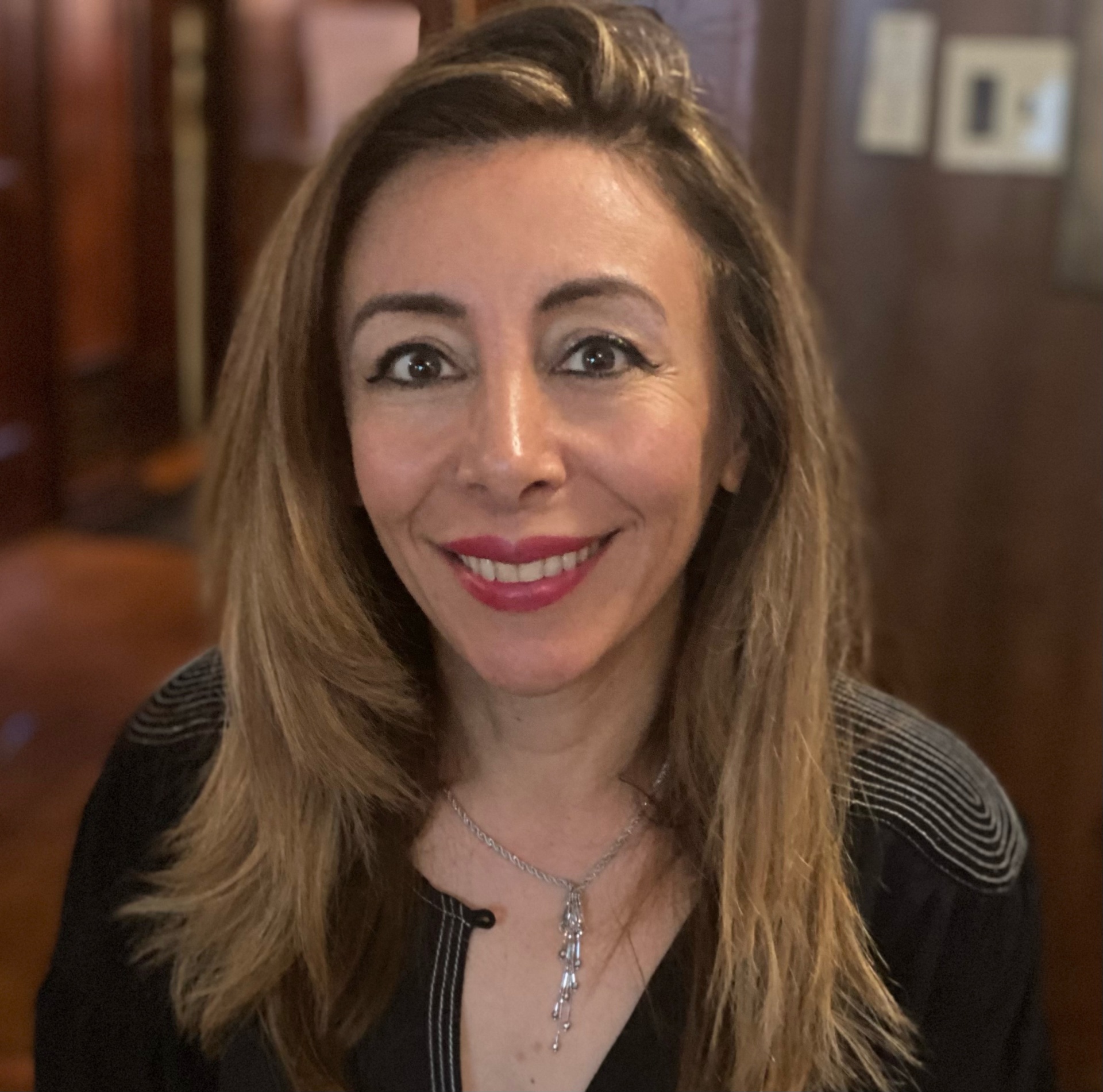
Professor and Department Chair
Department of Advanced Studies in Education and Counseling (ASEC)
College of Education
Reducing Disparities in Mental Health Treatment in Diverse, Trauma-Exposed Populations
How did you become interested in this research area?
I did not become interested in the field of psychology until after completing my bachelor’s degree. I worked in a Headstart program as a substitute teacher, and I saw the psychologists' important work with the children and families. I pursued my MS degree in Counseling Psychology, absolutely loved it, and became inspired to become a clinical psychologist. I began my Ph.D. program with the goal of becoming a clinician focused on treating families and children. After completing my Ph.D., a psychiatrist I worked with suggested I pursue post-doctoral training in trauma psychology since I demonstrated both an interest and competence in working with this population.
While I initially entered the field with the desire to implement effective clinical interventions with trauma survivors, my post-doctoral training was research-focused, and I quickly became intrigued with understanding and effectively treating PTSD and other trauma-related disorders in racially and ethnically diverse populations. I was extremely fortunate to receive training and mentorship from leaders in the field of trauma psychology, including Larry Palinkas, Fran Norris, Yuval Neria, and Charles Marmar. The mentorship I received from these individuals and others inspired me to continue my research and service in trauma psychology. I am honored to have been selected to serve on the American Psychological Association PTSD Clinical Guidelines Update Panel and the Board for the National Alliance for Trauma Recovery Centers. I am hopeful my research and clinical expertise that I share as a member of these boards will positively impact mental health services available for survivors of traumatic events both nationally and internationally.
Can you describe your research and the CSULB Long Beach Trauma Recovery Center (LBTRC)?
Currently, my research is focused on understanding and reducing disparities in mental health treatment in diverse, trauma-exposed populations. My research team is investigating the implementation of evidence-based therapies for PTSD in a community mental health setting serving low-income, racially and ethnically diverse clients at the CSULB Long Beach Trauma Recovery Center (LBTRC).
Our research is also investigating factors associated with retention and dropout in mental health treatment for traumatic distress as well timing and dosage of treatment. The CSULB LBTRC is funded by several grants including a large grant from the State of California, which allows for clinical service, graduate student training, research, and community education and outreach. The LBTRC has served over 5000 clients who have experienced crime and/or violence since 2014 at no cost. I have received over 8 million dollars in grant funding over the course of my career from federal, stated, and foundation grants.
How will your research impact the CSULB campus and the wider community?
Low-income racially and ethnically diverse victims of violence often times have low access to mental health treatment, and current research is limited with respect to the efficacy of evidence-based treatments for traumatic distress reactions such as posttraumatic stress disorder (PTSD) for diverse, low-income clients. Do low income clients stay in treatment? Are cultural adaptations of existing PTSD treatments necessary for diverse populations? My research informs these areas for the wider community.
My research also investigates whether novice therapists, such as graduate students who are trained to implement evidence-based therapies for PTSD, may adequately assist clients in decreasing trauma related mental health issues. In addition, my research team is investigating dropout from PTSD treatments and whether additional engagement methods, such as case management, are necessary to adequately assist diverse populations who have experienced traumatic events. Graduate students pursuing Counseling Psychology train at the LBTRC and are being taught to implement evidence-based therapies for PTSD. CSULB graduate students assist in data collection and data analysis in addition to gaining expertise on treatment implementation.
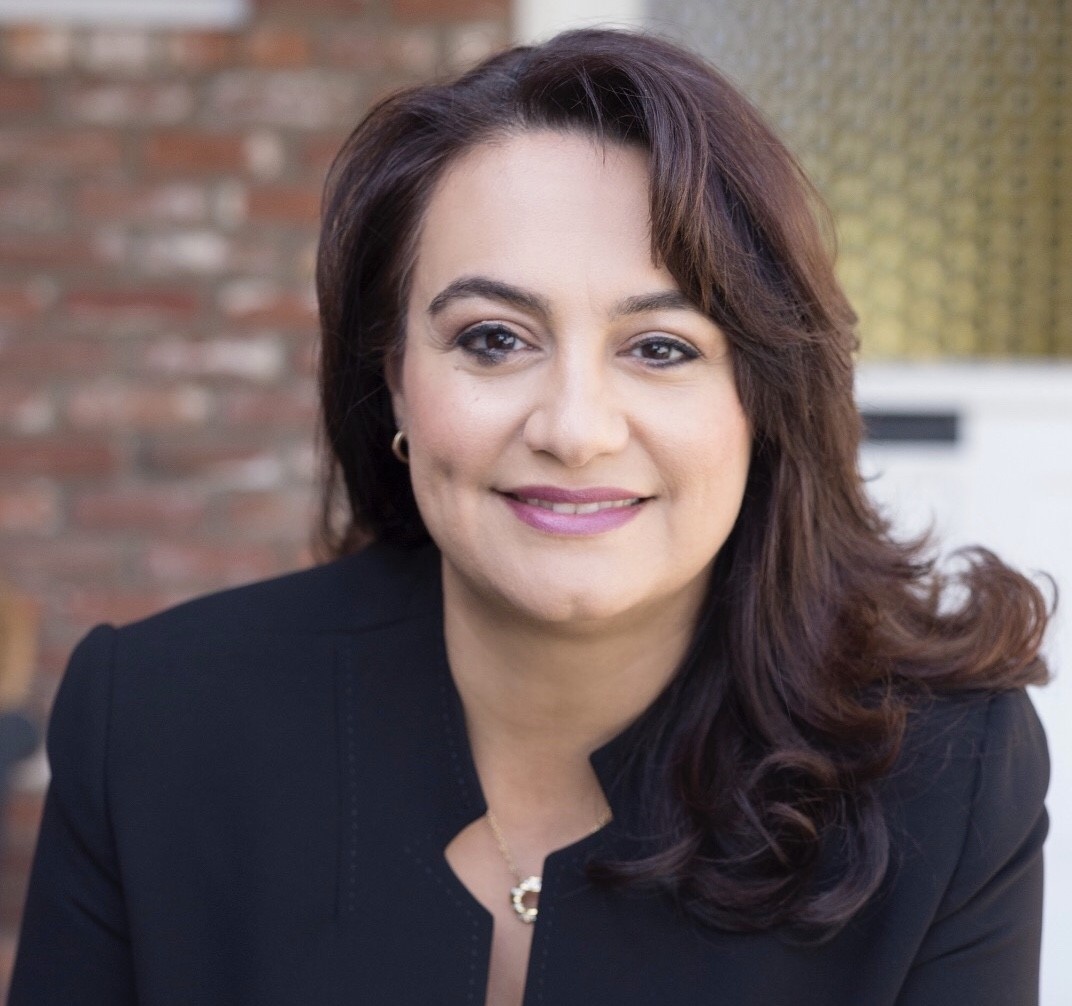
Associate Professor
Department of Family and Consumer Sciences
College of Health & Human Services
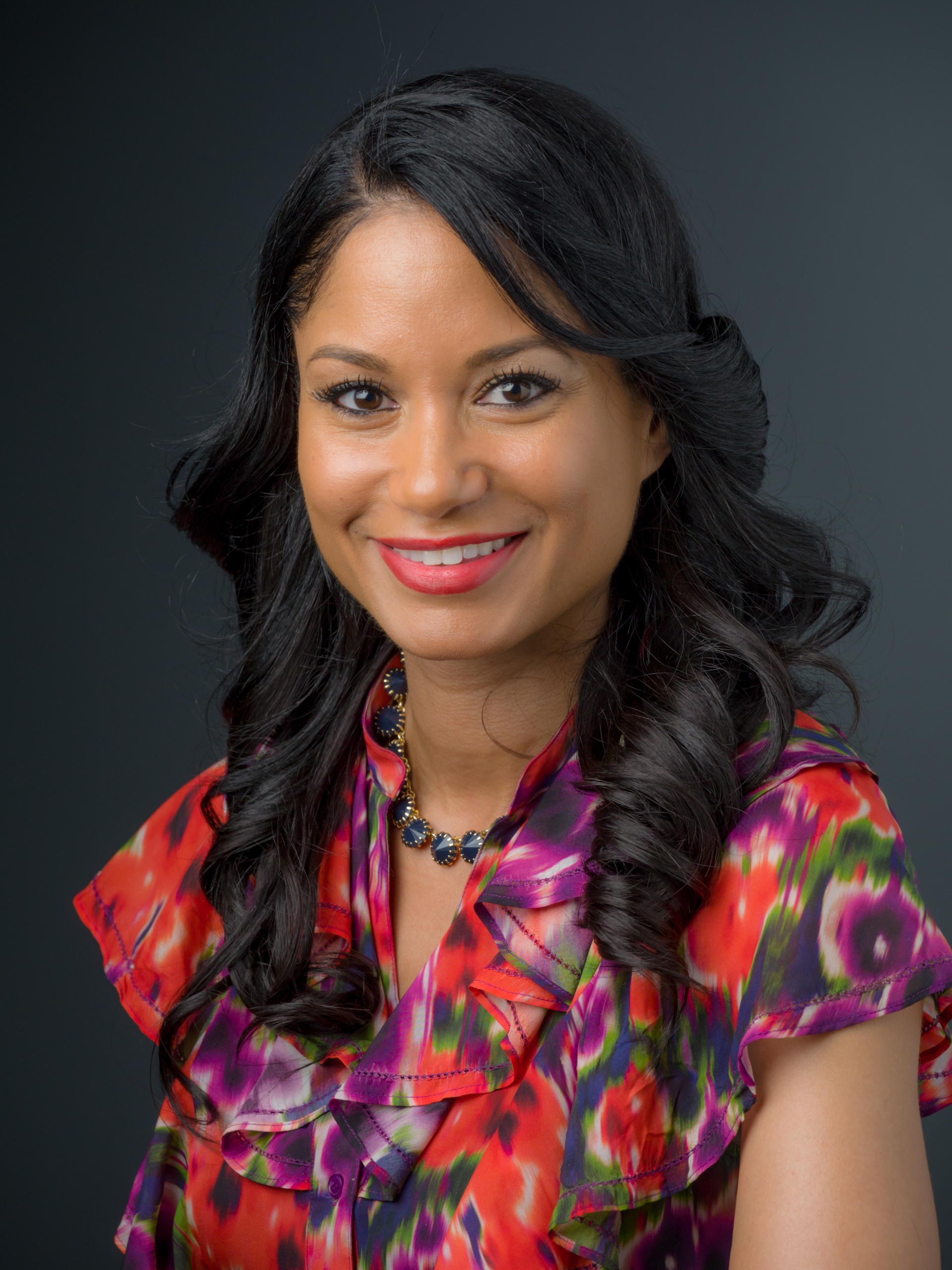
Professor
Department of Family and Consumer Sciences
College of Health & Human Services
Reseaching Fathers of Color From Underserved Communities
Over the past 3 decades, an expanding body of literature concludes that fathers’ positive involvement with their children is associated with optimal cognitive, social, and emotional outcomes for children from infancy into emerging adulthood (Lamb & Lewis, 2013; Pleck, 2010; Pruett, 2000; Yoder, Brisson, & Lopez, 2016). Research has also found that higher levels of parental competency and high levels of parental engagement can promote positive mental health outcomes in men (Garfield, Clark-Kauffman, & Davis, 2006). In of light of these positive implications for both children and fathers, a national fatherhood initiative has emerged to support and facilitate healthy father-child relationships. Consequently, the number of fatherhood education programs in the US has increased in the past few decades, yet our understanding of the effects of these programs, especially in diverse populations of fathers, remains limited (Schoppe-Sullivan & Fagan, 2020).
Dr. Roy and Dr. Brown’s research agenda aims to address gaps in the empirical literature as it relates to fathers of color from under resourced communities. Their research is centered on the reality that men of color experience both overt and covert levels discrimination on multiple levels. The intersections of race and gender can create a unique experience for fathers of color as they attempt to engage with their children, families and others in their communities. As a result, many fathers of color, lack the instrumental and social support necessary to effectively enact their roles as fathers. Using qualitative data from a community funded project Dr. Roy, Dr. Brown and their colleague Dr. Nancy Dayne have examined the changes in the perspectives and behaviors of fathers of color based on their participation in community-based fatherhood education programs. In a similar vein, they have also investigated the ways in which the characteristics of fatherhood program facilitators impact the experiences that fathers have in such spaces.
Additionally, Drs. Roy and Brown have also conducted research with Black and Latino fathers attending institutions of higher education. Specifically, they have examined the challenges and resilience factors impacting retention and graduation among these fathers. Although, most student parents are mothers, the needs of student-fathers are invisible on college campuses and in the literature. Moreover, considering ethnic minority student-fathers and the socio-cultural challenges to enacting their role as dads, as well as the unique challenges faced in completing their education as men of color in the US, the experiences of these student parents are even more important to examine.
The research that Dr. Roy and Dr. Brown conduct with fathers of color is largely qualitative in nature because the voices of ethnic minority men in social science research have historically been ignored and/or marginalized. Therefore, it is of central importance that their experiences are told in their own words. They believe that by identifying supportive factors for men in their fatherhood role is critical for families, practitioners, and the overall wellbeing of communities. In working directly with fathers of color, Dr. Roy and Dr. Brown have discovered that many of these fathers experience a lack of social support and report limited access to the resources needed to build positive fatherhood trajectories. Their research also identified critical components of successful fatherhood education programs and the need to focus on supporting men with relationship building skills to assist them in successfully navigating their co-parent relationship, as well as, provide them with tools to access support from family and community resources. Drs. Roy and Brown have also highlighted the importance of supporting men of color in redefining their conceptualizations of masculinity and fatherhood to broaden the ways in which men contribute to the lives of their children, families and communities. Moreover, their research promotes the critical role that social support from other men play in developing positive fatherhood identities.
Dr. Roy and Dr. Brown have published their research in several top tier scholarly journals in the field of family science and have presented at a number of national professional conferences. Although their work is largely structured around fatherhood, they have also published research on the economic well-being for families of color and relationship satisfaction of interracial parents across the transition to parenting. Additionally, they are currently working on a fatherhood manual and curriculum that is based on the themes that have emerged from their existing research.
Summary of Relevant Scholarly Papers and Presentations
Roy, R.N., Brown T.L., Roy, D.R., Hailey, A., & Rockett, I. (In progress). Examining the lived experiences of student fathers at Hispanic Serving Institutions and Historically Black Colleges and Universities.
Brown, T.L., Roy, R.N., Dayne, N., Roy, D.R., & Carrichi-Lopez, A. (In progress). Promoting father engagement among low-income fathers: Fathers’ narratives on what matters in a fatherhood program.
Roy, R.N., James, A., & Brown, T.L. (2021). Racial/Ethnic minority families: A decade review. Journal of Family and Economic Issues,42, 84-100.
James, A., Roy, R.N., Brown T.L., Roy, D.R., Smith, S. & Dayne, N. (2020). Variation in facilitator characteristics in relation to fatherhood program outcomes and processes. Family Relations, 69(5), 956-966.
Roy, R.N., James, A., Brown, T.L., Craft, A., & Mitchell, Y. (2020). Relationship satisfaction across the transition to parenthood among interracial couples: An integrative model. Journal of Family Theory & Review, 12(1), 41-53.
Roy, R.N., Brown, T.L., Roy, D., Mayasa-Hailey, A., & Rockett, I. (November, 2020). Educated and Parenting: The Experiences of African American and Latino Fathers on College Campuses, Paper presentation at the annual meeting of the National Council of Family Relations (NCFR), Virtual Conference.
Roy, R. N., James, A. G., Brown, T.L., Craft, A.L., & Mitchell, Y. T. (2019, November). Relationship satisfaction across the transition to parenthood among Biracial couples: An integrative model. Paper Presentation at the annual meeting of the National Council of Family Relations (NCFR), Fort Worth, TX.
Roy, R.N., Brown, T.L., & Mitchell, Y. (2018, November). Maternal stress across the transition to motherhood: The experiences of Black mothers. Poster presentation at the annual meeting of the National Council of Family Relations (NCFR), San Diego, CA.
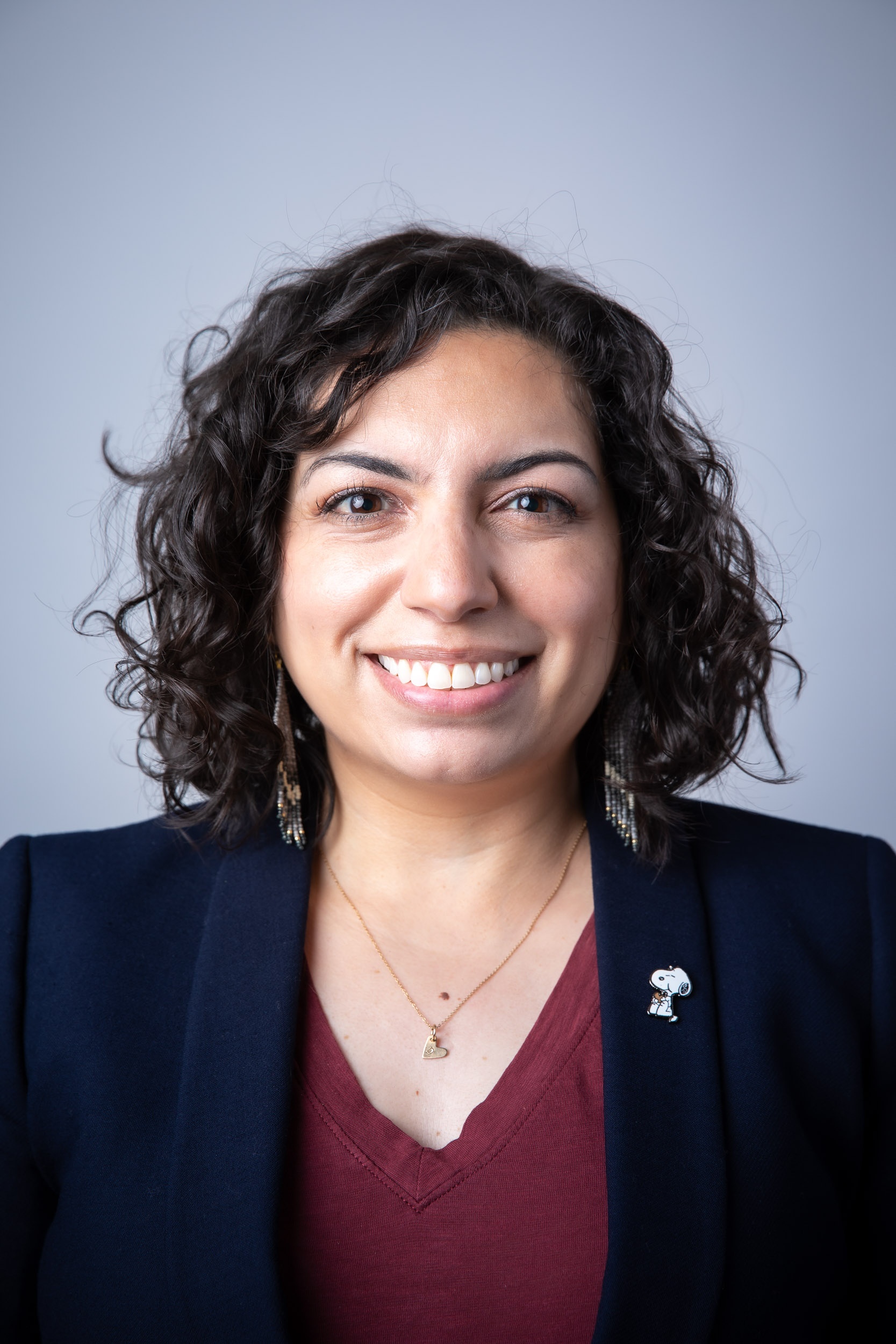
Assistant Professor
Department of Teacher Education
College of Education
Providing Historically Marganalized Students with an Education that Affirms Their Lived Experiences and Cultural Background
Dr. Macias’ work focuses on improving the educational experiences of historically marginalized students. Her research interests are greatly influenced by her experiences in the classroom, both as a former high school teacher and as a student of color. After having to teach the same canonical texts each year, mostly written by dead white men, Dr. Macias wants to push against an educational school system that has roots in white supremacy and relies on a white washed curriculum. Too many historically marginalized students graduate from high school without having the opportunity to learn about people who look like them, hear from people who sound like them, or feel represented in classroom texts or curriculum. Historically marginalized students need to be provided with an education that values, includes, and affirms their lived experiences and cultural backgrounds; to do that, educators need to rethink their approaches to teaching and what they consider worth learning.
Currently, Dr. Macias is a consultant on a California e-Learning Lab grant with UC Davis, CSU San Bernardino, and Montecito College to bring culturally responsive pedagogy into an introductory college-level Chemistry course through an online teaching program. Dr. Macias’ expertise in culturally responsive pedagogy and STEM education is currently informing the design of the program to infuse culturally relevant contexts and topics into the chemistry content. Similarly, Dr. Macias is also part of a National Science Foundation (NSF) education grant recently recommended for funding that plans to integrate culturally responsive pedagogy via student artificial intelligence projects into three STEM courses at San Jose State, Cal Poly Pomona, and CSU San Bernardino. LIkewise, Dr. Macias is also part of several other CSU research teams that have also submitted NSF grants seeking to infuse culturally responsive pedagogy and project-based learning into their STEM departments, including Calculus and K-12 science education courses. Her work with different STEM departments hopes to close the educational opportunity gap that persists in STEM education and diversify the STEM field by making STEM teaching more relevant and culturally affirming for students of color.
Related to her work on culturally responsive pedagogy, Dr. Macias is also a researcher with the CSULB Center to Close the Opportunity Gap (CCOG). Her work with CCOG examines the role that K-12 ethnic studies courses play in closing the opportunity gap. Given the recent adoption of secondary ethnic studies as a graduation requirement for all graduating seniors in California, as well as the known positive impact that ethnic studies courses have on culturally and linguistically diverse students, California teachers need to be prepared to effectively teach ethnic studies while holding true to the original tenets of ethnic studies. Teacher education programs, including CSULB’s Teacher Education Department, must meet this need. Presently, Dr. Macias is conducting a study focusing on the beliefs and experiences of current secondary ethnic studies teachers as a way to better understand what teacher preparation programs need to provide to best prepare preservice ethnic studies teachers. Unprepared or uninformed ethnic studies teachers can do more harm than good in a course as impactful as ethnic studies; moreover, historically marginalized students do not need more trauma inflicted on them in their schooling. Through this research, Dr. Macias hopes to center the experiences and voices of teachers who understand the needs and strengths of culturally and linguistically diverse students to inform the preparation of the next generation of high quality ethnic studies teachers.
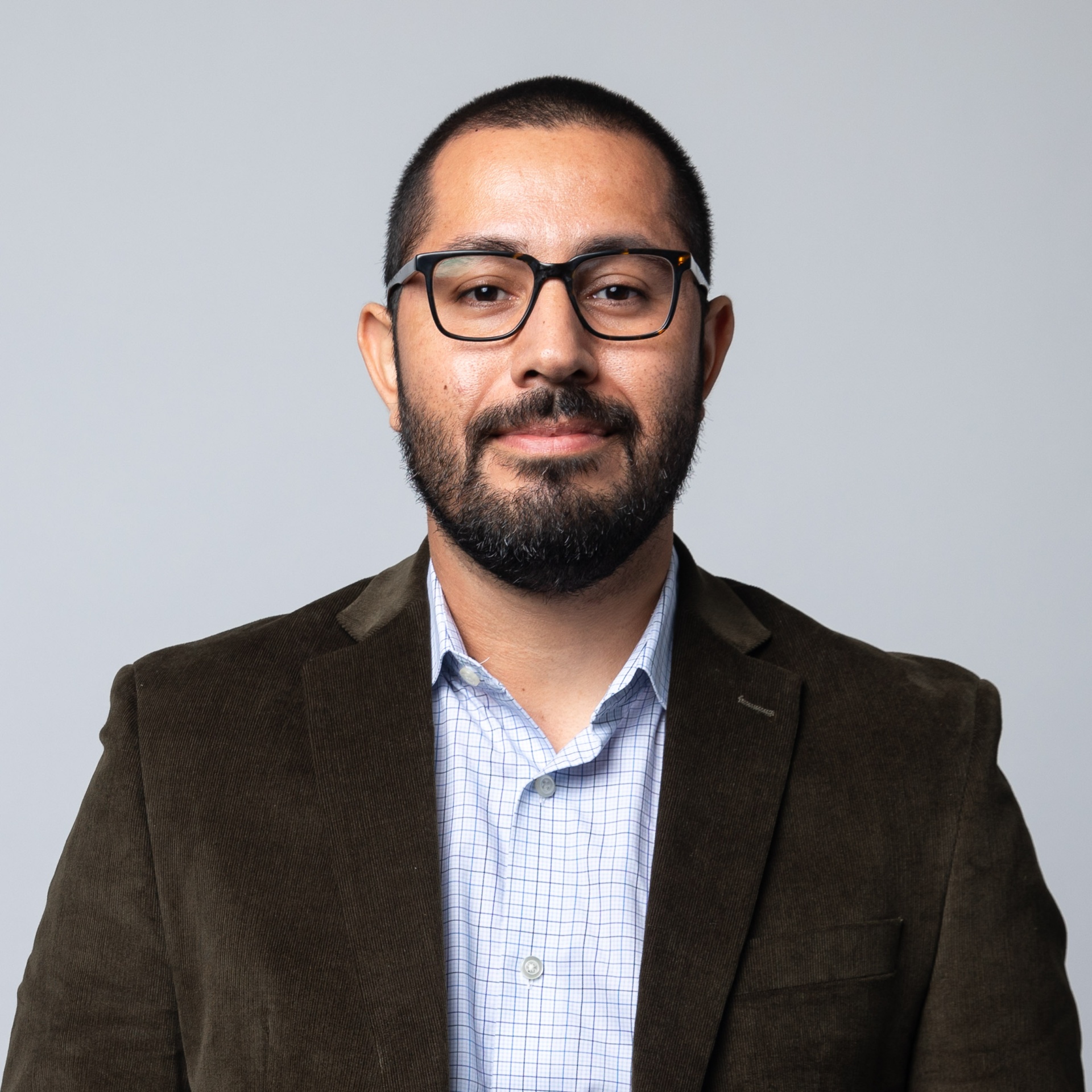
Assistant Professor
Department of History
College of Liberal Arts
Long-Term Impact of the 1910-1920 Mexican Revolution
After the harvest season of 1973, my father left his hamlet of 500 people in Jalisco, Mexico and walked through a desert, swam across a river, and hitched a ride to Long Beach, California. He was 17 years old, had experience as a field hand, a sixth-grade education, and was determined to make enough money in el norte to buy a horse. His first job was at a car wash, and he remembers making $1.65 an hour. He worked a series of odd jobs and soon saved enough money to send for his parents and seven younger siblings.
My mother is also from the same hamlet of 500 people. At the age of 16, she moved to Guadalajara, Jalisco (the region’s major urban center) and found work at Calzado Canadá, which during the 1960s and 1970s was the biggest shoe factory in all Latin America. She was paid “piecework” wages and remembers working six days a week from sunrise to sundown. In 1979, she left Guadalajara for Long Beach, California to be closer to her family, who had also left the hamlet for greener pastures a few years earlier. My parents were part of the three million undocumented immigrants that were granted amnesty and legal status in 1986. I was born in Long Beach, California—that same year.
We visited Jalisco frequently during my childhood. The 20th of November (the anniversary of the Mexican Revolution) is celebrated annually in my parent’s hamlet. My earliest recollection of the region’s history, however, was from my grandfather’s stories. My abuelo, ‘Chuy,’ was born during the heyday of the Mexican Revolution, lived through the Cristero rebellion of the late 1920s, and in the 1930s was a recipient of a land grant from one the most radical agrarian reforms in Latin America. It was through my abuelo that I gained an appreciation of Mexican history. From a young age, then, the stories that fascinated me were inseparable from the people who introduced me to them; history and family were, therefore, one and the same.
My book project, Rebellious Citizens: Democracy and the Search for Dignity in Revolutionary Mexico, placesthe roles of ordinary people in the country’s long fight for democracy, front and center, to tell the story of how they actively shaped the political process and struggled for equality and dignity in the decades following the Mexican Revolution of 1910-1920. Situated in a moment marked by an unprecedented period of state interventions and the country’s turn towards democratic rule, the book investigates the impact of three successive upheavals that shook the established social order in the central-western state of Jalisco. It demonstrates that the long-term effects of these recurring risings were central to the new political system produced by the post-revolutionary state. After each rebellion officials debated the limits of state power and struggled with governance, while simultaneously acquiescing to the demands of citizens. It is as much a story about the growth of democracy, then, as it is of “people power” and the creation of active forms of politics in Mexico.
Rebellious Citizens is under advance contract with Stanford University Press. I have recently been awarded a Career Enhancement Fellowship from the Institute for Citizens & Scholars and the Andrew W. Mellon Foundation to support completion of the book during the 2022-2023 academic year. In the past, the project has been supported by fellowships from the Fulbright Commission in Mexico (COMEXUS) and the University of California Institute for Mexico and the United States (UC-MEXUS), and an award from the National Institute of Historical Studies on the Revolutions of Mexico (INEHRM).
My goal is to produce scholarship that will inspire my work in the classroom. This research has formed the basis for a course that I am developing titled, "Cycles of Violence: From the Mexican Revolution to the Rise of the Drug Cartels." The course will explore the role of revolutionary change in twentieth-century Mexico; how the postrevolutionary state and its adversaries mobilized memories of the revolution to meet their particular political and social ends; the dirty war of the 1970s; and the drug war that has devastated Mexico over the past decade and a half.
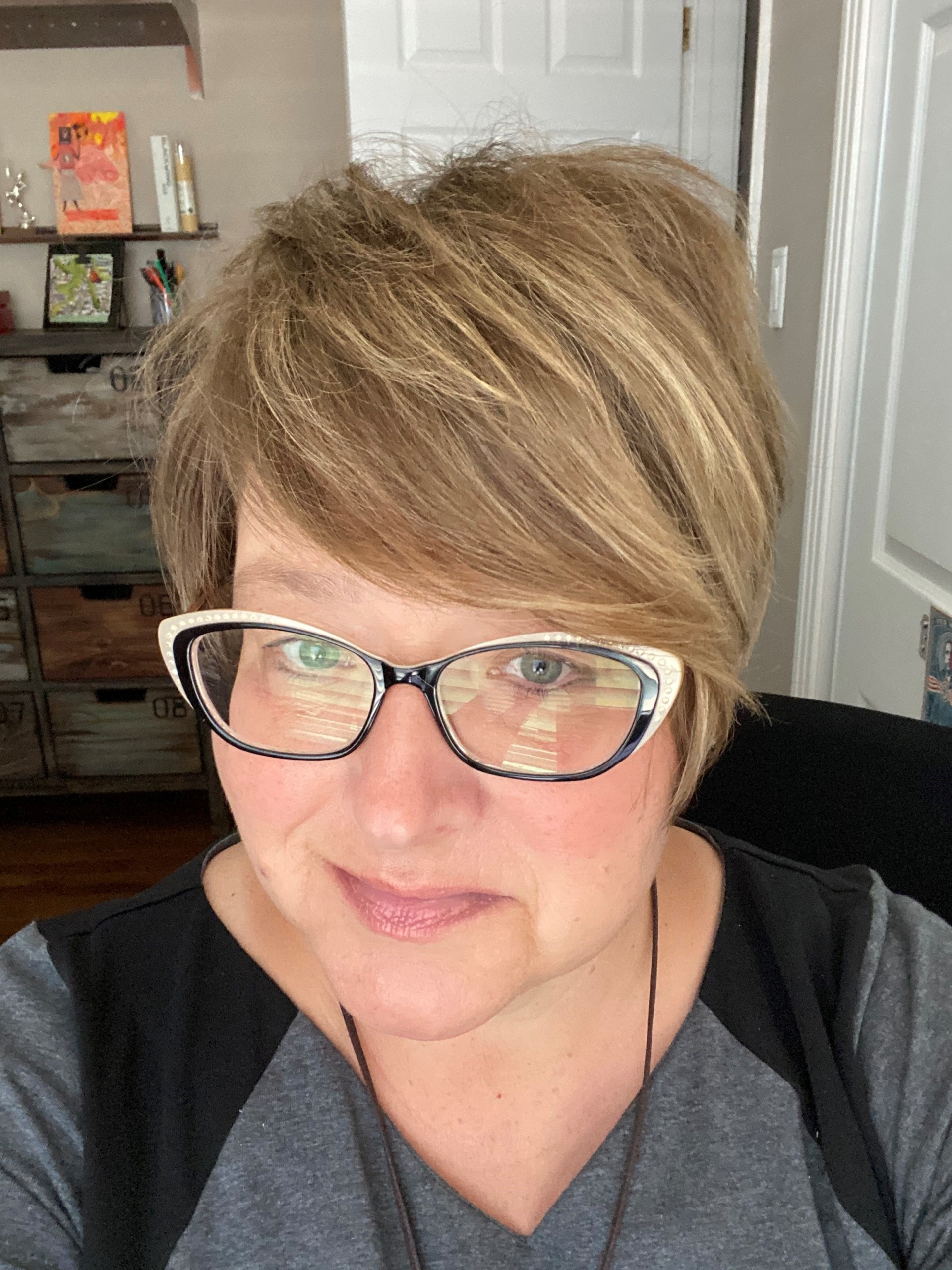
Professor
Department of Human Development & Director, Long Beach Community Internship Program
College of Liberal Arts
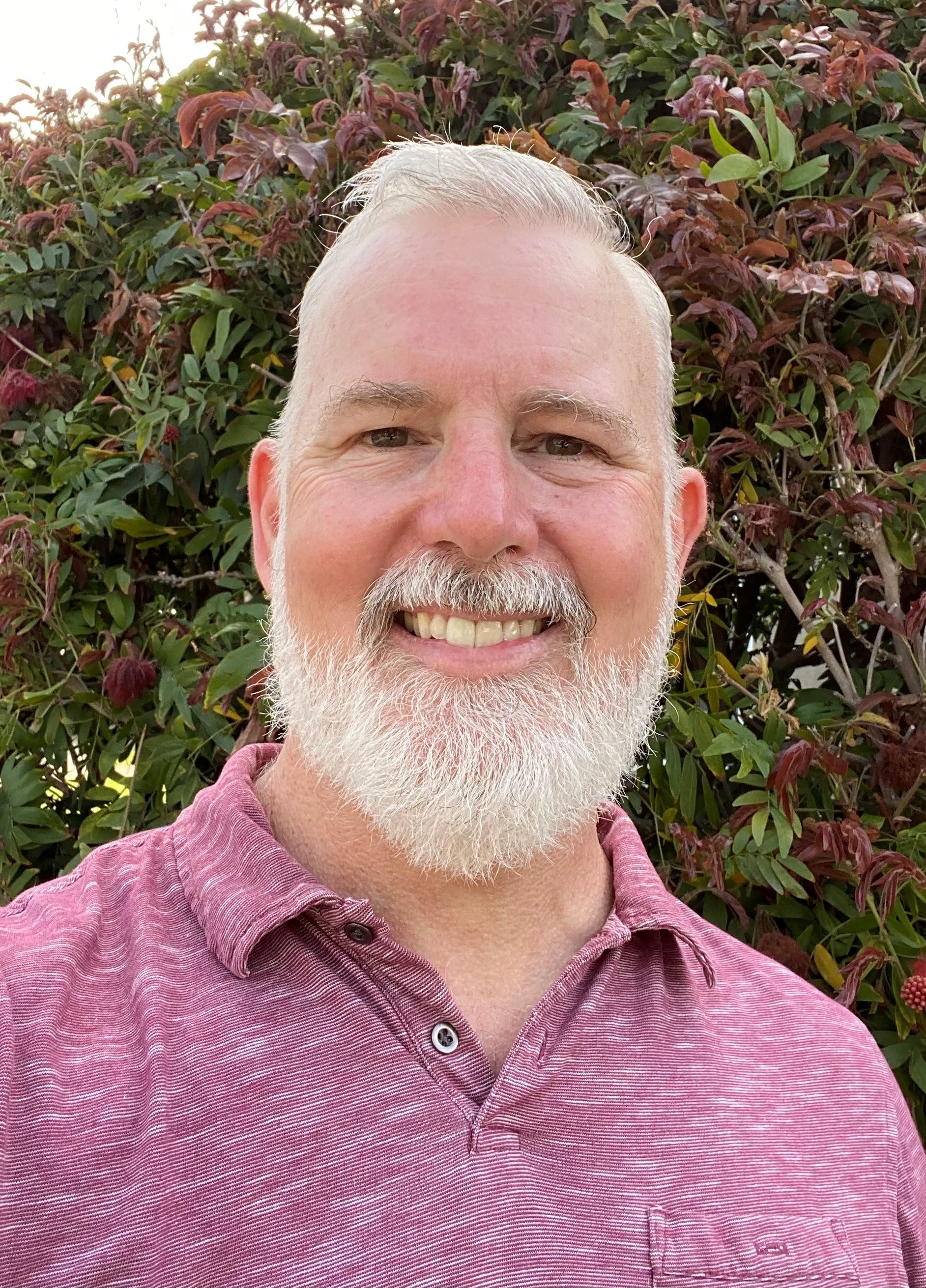
Assistant Professor
School of Art
College of the Arts
Students Respond to the COVID-19 Crisis: A Photovoice Project
In Spring 2020 the world, including university campuses, grappled with the outbreak of COVID-19. As a campus, we had to abruptly pivot and adopt alternative methods of instruction and delivery of student services and programming. Although we all worked tirelessly to do what we thought was best for students’ health and academic training, rarely did we consult students about how the pandemic and related events were affecting them or what they needed. To give students a voice during this time of confusion and uncertainty, Drs. Manke and Trimble launched a new Photovoice project, Students Respond to the COVID-19 Crises: A Photovoice Project.
The goals of Photovoice (Wang & Burris, 1994) are to promote critical dialogue about important issues, empower communities or groups of people by elevating their voices, and to create awareness and drive change through dialogue and sharing.
Over the course of twelve months, 609 students from across the CSULB campus took photographs and wrote 100-word captions or narratives in response to a prompt--Take a photo that reflects the impact of COVID-19 on you, your family, and your community. Most participants used digital photography in some form; some chose to document artwork they had created through multiple mediums including painting and collage. Others chose to digitally create, enhance, or distort their images using digital media tools.
Narratives were coded using an iterative reflexive coding process lead by student research assistants. Students read samples of narratives, extracted relevant and important words, and categorized words into themes. Coding was grounded in Tara Yoso’s Community Cultural Wealth Model (2005), an approach that allowed the researchers to move beyond deficit approaches to seeing our students through the lens of cultural capital. Thirty themes across narratives were identified; some of the most common include: physical health (85% of narratives included this theme); familial capital (e.g., partners, bonds, parents; 70%), uncertainty and change (67%), aspirational capital (e.g., hope, goals, dream; 49%); and mental health (37%).
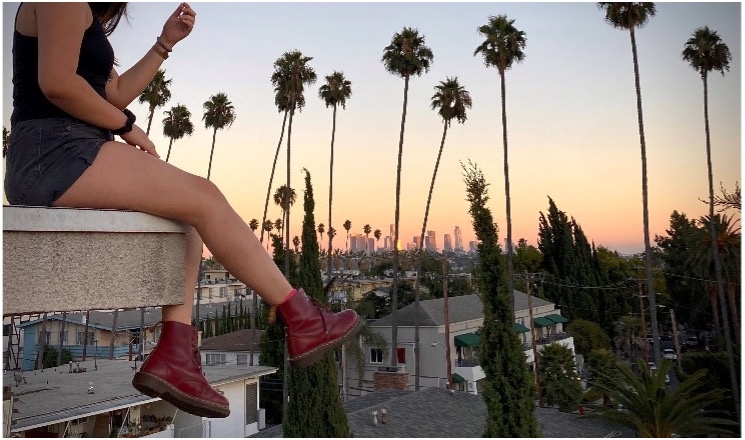
Photos, narratives and the coding results have been shared in several different venues including through an online exhibition at the Kleefeld Art Museum; presentations to administrative staff, students and faculty at meetings and townhalls, the Provost’s convocation message in Fall 2020, academic conferences, and a forthcoming chapter in an edited volume focused on art, resilience, and renewal. Drs. Manke and Trimble hope the findings of this project will help our campus (and other universities) develop innovative ways like Photovoice for including the voices of students, our most important stakeholders, in conversations about policies and practices that affect them. We know that students are experts on their own lives and that data about students are not the same as data (information) from students. You can see more photo and narrative submissions here: https://bit.ly/CovidPhotovoice
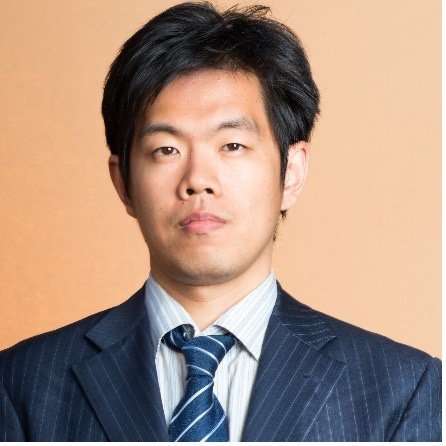
Assistant Professor
Department of Chemical Engineering
College of Engineering
Speeding Up the Transition from Oil/Gas by Modeling, Controlling, and Optimizing Renewable Energy Systems
How did you get interested in this research?
My Ph.D. and Postdoc research focuses on the advanced control system design and optimization for the oil/gas industry. That research, supported by the Massachusetts Institute of Technology (MIT) and BP Inc, aims to produce on-spec gasoline and minimize the production cost. However, after becoming a faculty member at CSULB, I switched my research interest to the renewable energy system. I realized that environmental issues, such as air pollution and global warming, resulting from fossil-based fuels, really impact human beings more than before.
Even though solar power and hydrogen show some promising advantages to replace oil/gas, their cost is still high. The California government creates a great environment to incubate advanced technology for more efficient solar power systems and hydrogen production. Thus, I believe that the renewable energy research will benefit the local economy, improve our environment, enhance energy security, and make California a better place to live.
Can you give a brief summary of your research and/or grants you have received?
My current research is on the modeling, control, and optimization of renewable energy systems, such as photovoltaic (PV) based microgrids and electrolysis for hydrogen production. My industrial collaborators include Southern California Edison (SCE) and Southern California Gas Company (SoCalGas). I have received three major research funds. The first is a Department of Defense (DoD) instrument grant to acquire a laboratory-scale power plant. Such an effort will enhance the research of thermal energy systems to reduce the cost of electricity generation. It also benefits the education of Chemical and Mechanical Engineering students.
Second, I received a transport research grant from the San Jose State University Research Foundation to design the electric vehicle (EV) charging station powered by PV. California has an ambitious goal to achieve five million zero-emission vehicles (ZEVs) on the road by 2030 and build 250,000 EV charging stations by 2025. How effectively design the charging station and schedule to meet California’s needs is crucial.
Third, I received a California Energy Commission (CEC) grant to build an EV workforce training center. Students will gain research and hands-on experience with EV power systems, motor control, and batteries.
How will your research impact the CSULB campus and/or wider community?
My research and projects will speed up the transition from oil/gas to clean energy. The research target is to build a reliable, economical, and resilient solar power system to make EV charging more affordable and convenient for all Californians. My EV workforce training program will significantly help low-income and minority students to study the necessary skills for EV-related careers.
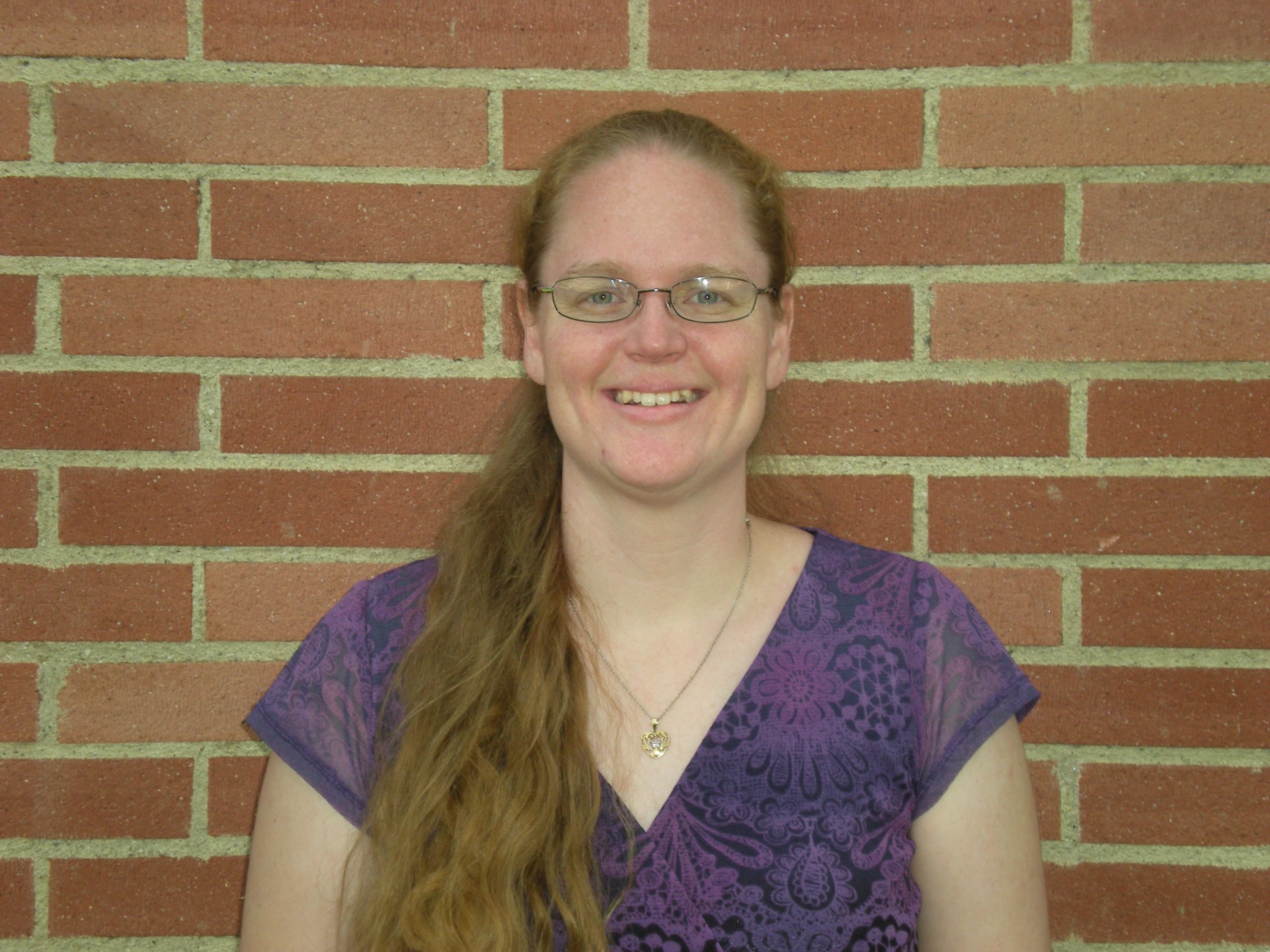
Assistant Professor
Civil Engineering and Construction Engineering Management
College of Engineering
Addressing Global Water Resource Challenges Across a Broad Range of Spatial and Temporal Scales
Do you ever wonder:
- How water moves among the atmosphere, surface, and subsurface storages?
- How much water will be stored in the mountain snowpack as air temperatures warm?
- To what extent are droughts, floods, and other extreme events becoming more frequent or intensifying around the world?
- How satellite observations are used to understand our water resources and how climatic extremes impact our water supply?
My research group dives into these types of timely questions to address global water resources challenges across a broad range of spatial and temporal scales.
Despite water being essential to life, significant water-related questions and issues exist as our natural environments respond to climate change and built systems age. With global temperatures rising, it is becoming increasingly important to develop more sustainable practices and communities. Improving our characterization of where water is stored (e.g., atmosphere, snowpack, rivers, lakes), when and how much water is available, and how dynamic hydrologic processes and fluxes (e.g., precipitation, evaporation, streamflow) are changing will guide us toward climate resiliency. Although large populations around the world depend on water derived from seasonal snowmelt, accurately estimating and monitoring the amount of water in the complex, mountainous snowpack still poses challenges for water resources management and other sectors (e.g., hydropower, agriculture) that depend on snowmelt-derived runoff. Therefore, studying water and climate interactions and developing strategies to better assess our water resources across a variety of different landscapes are critical for making informed engineering, management, and policy decisions. Since water, energy, and food systems are interconnected across the globe, preparing for and understanding our changing water resources can have local to far-reaching impacts on humans and the environment as they propagate across time and space.
Merging the fields of hydrometeorology, climatology, remote sensing, and modeling, my research group aims to better characterize hydrologic states and fluxes as they interact with natural and human systems. We use a combination of data and models, including in-situ observations, remote sensing, and both physical and statistical methods to improve hydrologic estimation, water resources management, and environmental hazard mitigation. We analyze extreme events and seek to understand their myriad of impacts and feedbacks. My research group therefore investigates important topics such as cascading hazards and impacts of droughts and floods to understand linkages, for example, among snow, drought, wildfires and our water resources.
Inspiration Propelling My Field of Study
Growing up while experiencing droughts of differing severities and learning about previous droughts led me to take part in water conservation activities and become passionate about hydrology and water resources engineering. Also, recognizing the importance of snow to local communities and its broad-reaching impacts in remote regions that may depend on snowmelt-derived water has intrigued me as the seasonal snowpack can be fleeting in warm and/or dry years. Therefore, I guide my research team to address timely issues of high societal importance so that our findings can inform current water and climate issues, and in doing so, hopefully inspire future generations of environmental leaders and engineers.

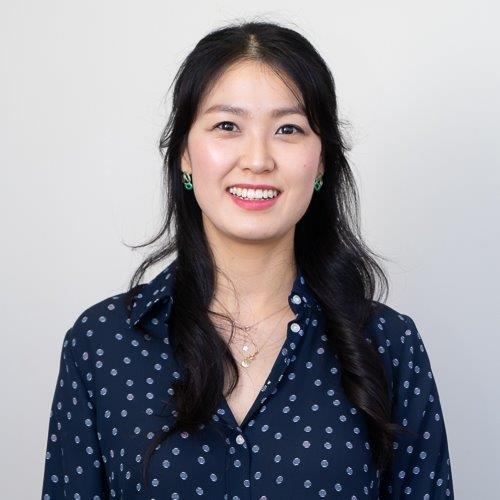
Assistant Professor
Department of Accounting
College of Business
The Effect of Tax Avoidance on Capital Structure Choices
In this study, we examine the effects tax avoidance on firms’ capital structure decisions. Prior studies focus on the effects of tax avoidance on cost of equity and debt capital. These studies find varying associations between tax avoidance and cost of equity capital but generally find a negative association with cost of debt (e.g. Goh, Lee, Lim and Shevlin 2016; Hasan, Hoi, Wu and Zhang 2014). We extend this literature by focusing on a direct and important consequence of cost of capital effects: capital structure decisions.
Tax avoidance may affect financing decisions in at least two ways. First, tax avoidance may affect the relative costs of equity and debt capital. Tax avoidance may increase future expected cash flows and thereby decrease cost of equity (Goh et al. 2016) However, tax avoidance may engender increased risk which may increase both the cost of equity and debt (Hutchens and Rego 2013); Shevlin, Urcan and Vasvari 2020;) Second, tax avoidance may affect financing due to managerial biases. Survey evidence suggests managers mistakenly focus on GAAP effective tax rates rather than marginal tax rates in making financing choices (Graham, Hanlon, Shevlin and Shroff 2017). If so, managers will issue equity rather than debt as the firm increases tax avoidance because tax avoidance lowers GAAP ETRs, leading managers to (incorrectly) estimate a higher after-tax cost of debt and exhibit a bias towards equity.
Our main dependent variable captures the propensity to issue equity rather than debt. Our main independent variable is the three-year cash effective tax rate. We use several covariates known to affect tax avoidance based on prior studies. Using logistic regressions, we document positive association between tax avoidance and firms’ propensity to issue equity relative to debt after controlling for firms’ marginal tax rates. Using path analyses, we find that tax avoidance is 1) positively associated with cost of debt and 2) negatively associated with cost of debt. More importantly, we find that these effects explain the positive association between tax avoidance and the propensity to issue equity rather than debt.
Next, we use the 9th Circuit’s Xilinx decision in 2010 to mitigate endogeneity concerns. The decision invalidated regulations intended to reduce income shifting, resulting in greater tax avoidance among 9th Circuit firms. We document evidence that Ninth Circuit firms 1) increased tax avoidance following the decision relative to firms in other Circuits and 2) were more likely to issue equity rather than debt following the decision and relative to firms in other Circuits.
Finally, we turn to behavioral effects. We find evidence that one-year GAAP effective tax rates are positively associated with the propensity to issue equity relative to debt. We use an annual GAAP effective tax rate because survey evidence is consistent with managers using the annual GAAP ETR in making capital structure decisions (Graham et al. 2017). Next, we isolate managerial bias towards GAAP ETRs by controlling for permanent, discretionary tax avoidance and continue to continue to find a positive association between GAAP ETRs and the propensity to issue equity relative to debt. Overall, our study contributes to the literature on tax avoidance and cost of capital effects by documenting the way and extent to which these effects affect capital structure, an important firm outcome. Moreover, we extend the literature on tax rates and corporate finance by documenting the financing consequences of managerial focus on GAAP ETRs instead of marginal tax rates.
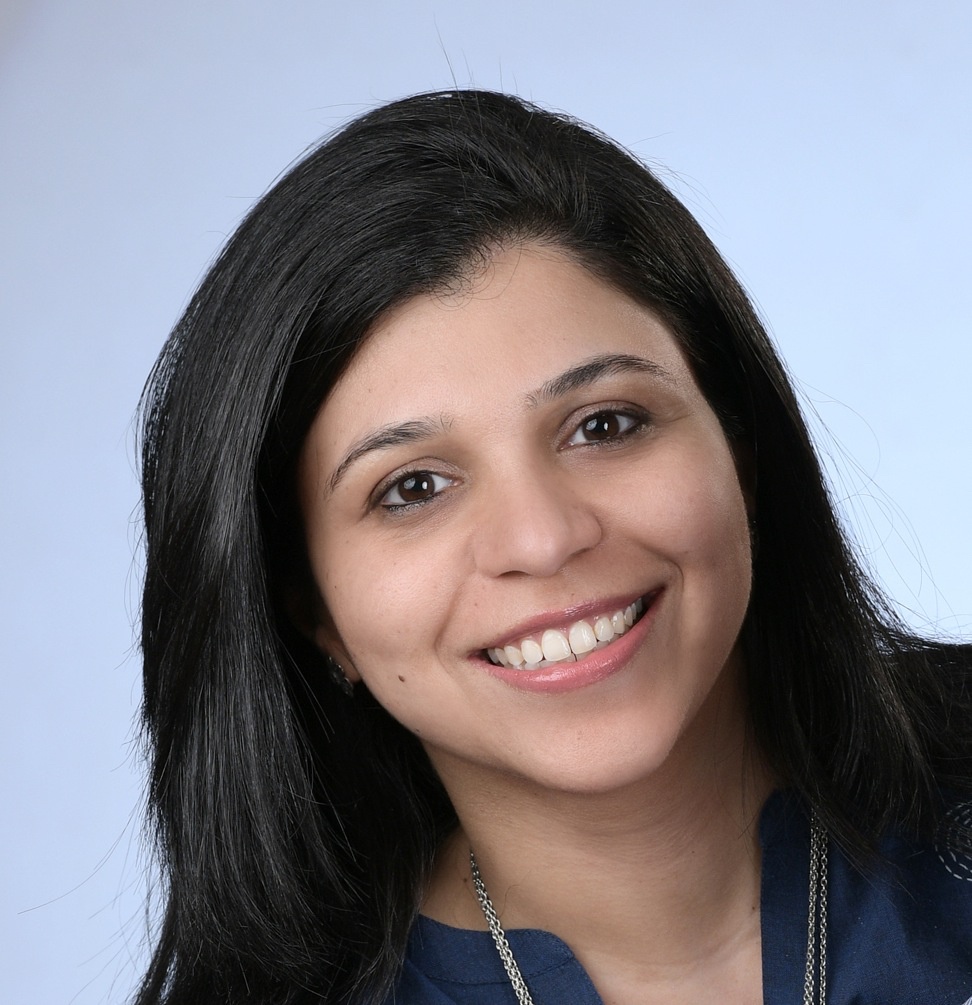
Associate Professor
Department of Chemistry and Biochemistry
College of Natural Sciences and Mathematics
Mentoring Students
In my laboratory, we use mammalian cells in culture as a model system to study fundamental questions in cellular biochemistry. One of the major questions we are focused on is how cells withstand and cope with stress. Like our body has different organs, our cells are also compartmentalized into different sections (organelles) with specific roles, and one of these organelles is called the Endoplasmic reticulum (ER). The ER is a site of many important functions including proper folding for proteins such as Insulin. Any excessive demand, such as increased insulin production and processing as experienced in type 2 diabetes, can stress the ER. When faced with stress, cells initially try to restore normal function, however, if the stress is prolonged and homeostasis is not achieved within a reasonable time frame, the stressed cell will ultimately kill itself. How cells make this life-or-death decision, is what we are fascinated with and are trying to answer. Interestingly, cells within a tumor also undergo ER stress because of many reasons including their fast growth rate and increased metabolism. However, they are able to alleviate high levels of ER stress and, unfortunately this adaptive ability to survive through ER stress has been correlated to their malignancy and chemo-resistance. Thus, to be able to design effective strategies for cancer treatment, it is crucial to understand the molecular mechanisms that allow cancer cells to live through stressful conditions and that is what we are primarily focused on in my laboratory. My long-term goal is to determine if the switch between survival and death can be manipulated to find therapeutic targets not only for cancer but also other diseases whose pathology involves ER stress such as type 2 diabetes.
Students are an integral part of my research from designing and execution of experiments to publishing and presenting the work. I have been fortunate to have highly motivated and talented students like Miguel and Nishi work in my team. Winning these prestigious awards (Don Eden Graduate and Glenn Nagel Undergraduate research awards) at the CSUPERB symposium this year is a testament to their hard work and dedication. These CSU system wide research awards are highly competitive and students from the same lab receiving both awards in the same year has likely never happened before in the 34 year- history of the CSUPERB symposium! To say that I am proud of Nishi and Miguel will be an understatement.
Mentoring my students to success takes a lot of time-commitment on my part as there is always a letter of recommendation to write, a fellowship deadline approaching, an experiment to plan/troubleshoot, or manuscripts and presentations to prepare. However, the euphoria I feel when that letter of recommendation results in admission to a graduate program, when that fellowship gets funded, when that experiment reveals a novel finding, when that manuscript gets accepted, and when that presentation wins an award - makes it well worth the time I invest into it! In the years to come, I look forward to continue to prepare my students for their chosen careers, rejoice in their accomplishments, and be their lifelong mentor.
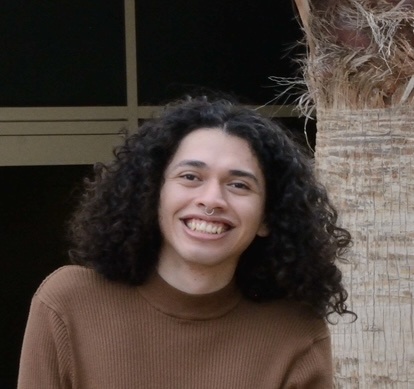
By Miguel Palma
M.S. Biochemistry Candidate
College of Natural Sciences and Mathematics
Award Winner - CSUPERB Don Eden Graduate Research Award
How did you get interested in this research area?
Before coming to college, I never thought of research as a career option, but rather as part of a checklist to get admission into a medical school. This was the motivation behind me joining Dr. Carmichael’s neurology lab in my sophomore year at UCLA. In his lab, I assisted one of his graduate students to study neurogenesis in mice after stroke. Through the many hours spent in the lab, I grew appreciation of scientific inquiry and the excitement of answering unsolved questions. After spending a year in the lab and realizing how much I enjoyed being involved in research, I started rethinking my long-term goals. Specifically, research in the biochemistry of disease was an area I wanted to delve into further. For this reason, I ditched my medical school plans and applied to masters’ programs in biochemistry instead to help diversify my skillset before applying to Ph.D. programs. This led me to CSULB, where I have been fortunate to be working in Dr. Bhandari’s lab studying the biochemical basis of cancer cells’ remarkable adaptability to the stressful tumor microenvironment. This experience has further strengthened my interest in pursuing biomedical research.
Can you give a brief summary of your research?
My research project involves investigating the role of a protein called Akt in cancer cell survival during stress. Akt is a central hub of signaling that regulates several cellular processes including survival, migration, and metabolism. Due to its involvement in these important functions, Akt is frequently mutated/hyperactivated in different types of cancers and therefore serves as a popular target for cancer therapeutics. Even though there are three different isoforms of this protein (Akt1, Akt2 and Akt3) in our cells, majority of the labs studying this protein rely on reagents that fail to distinguish between them and hence their studies tend to generalize the findings without specifying the roles of individual isoforms. My research project aims to tackle this issue with an effective experimental strategy designed to study the Akt isoform specific functions in controlling cell survival during stress.
I recently presented my research at the 34th annual CSU Biotechnology Symposium and received the Don Eden Graduate Student Research Award. This award is highly competitive as five graduate students were chosen by nominations received from across the 23 CSUs and the award is given on the bases of a poster interview as well as the ability to effectively communicate the findings through a short oral presentation. The award comprises of a cash prize ($750) and a travel award ($1,000) to a conference of my choice. I will use the travel award to present at the American Society of Cell Biology later this year.
How will your research impact the CSULB campus and/or wider community?
One of the hallmarks of cancer is an adaption to a stressful tumor microenvironment. Elevated survival signaling during stress provides cancer cells with enhanced resistance to therapy. My research in identifying the specific Akt isoform and the mechanism for its activation during stress will aid in furthering our understanding of the function of this important signaling protein and its role in these diseases. Currently, there is an Akt inhibitor that is in phase 2 trials in patients with advanced breast cancer. This drug targets all three Akt isoforms and considering the isoforms perform different functions, inhibiting all three may result in unwanted side effects. The findings of my project will contribute to the field and potentially guide generation of more specific drugs targeting cancer for the wider community.
I hope that my desire to pursue research also impacts other first-generation students. When I was growing up, I always had an interest in science, which for my parents meant “I will be get a job in a hospital”- a common experience shared by many other Hispanic families. Although this is meant to be positive, it puts their children in a box of what they can and should do if interested in science. Lack of resources, guidance, and opportunities to engage in research further adds to the unawareness of what career options one can have with a science degree other than healthcare. I hope my example can motivate students other first gen college students to get involved in research to see if this can be a career choice for them!
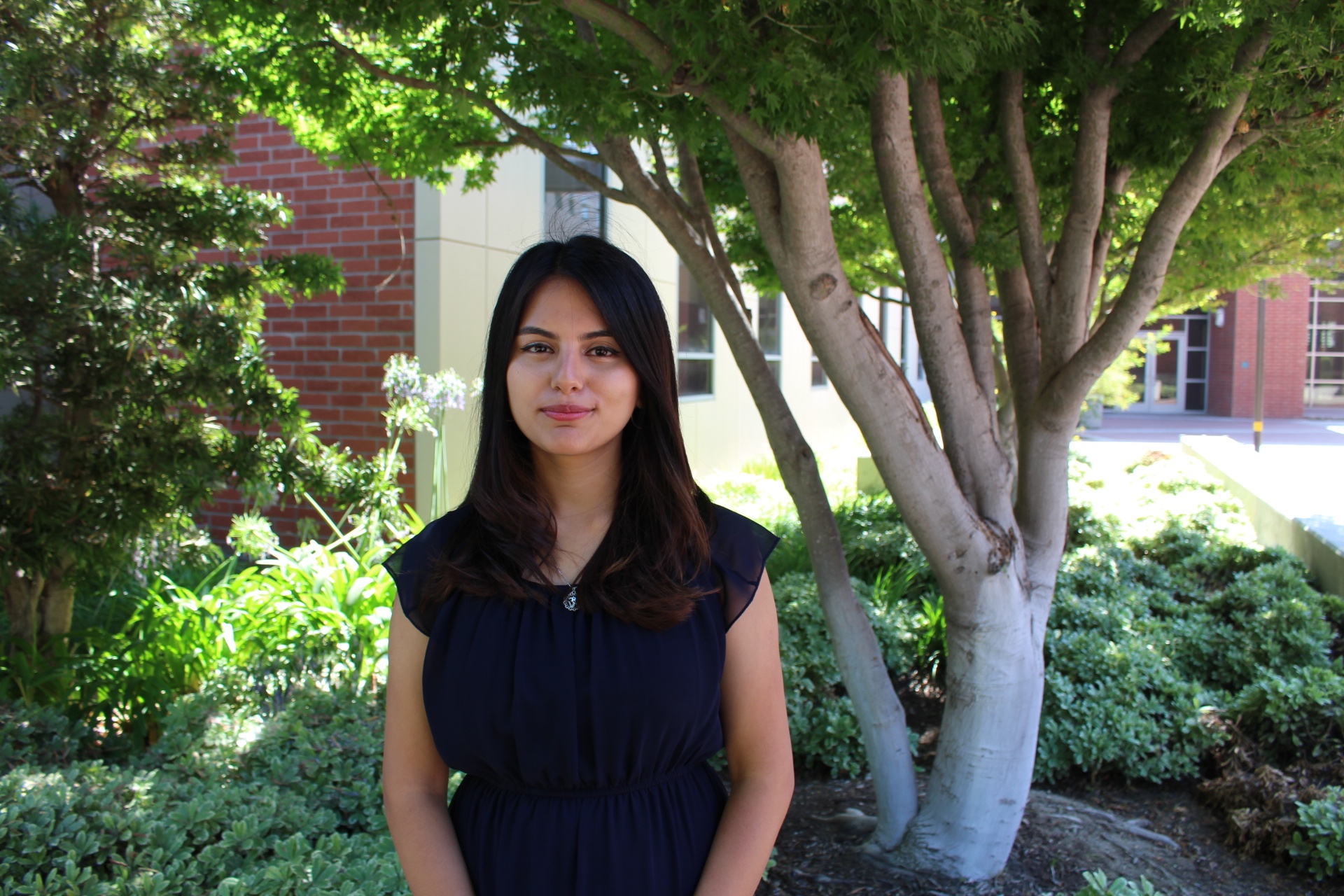
B.S. Biochemistry Candidate
College of Natural Sciences and Mathematics
Award Winner - CSUPERB Glen Nagel Undergraduate Research Award Winner
How did you get interested in this research area?
My first introduction to research was through the NIH-funded Bridges to Baccalaureate program (Bridges) at CSULB. As a Bridges fellow, I had the opportunity to work in Dr. Deepali Bhandari’s laboratory in the Department of Chemistry and Biochemistry during summer 2019. My research project involved investigating the molecular mechanism underlying the chemopreventive action of aspirin, a common over the counter pain killer. Being involved in biomedical research helped me realize my passion for it and I continued volunteering in Dr. Bhandari’s lab even after the Bridges fellowship ended. The following year, I transferred to CSULB as a Biochemistry major and was selected for the NIH-funded Research Initiative for Scientific Enhancement (RISE) fellowship. This fellowship helped me develop my project further in Dr. Bhandari’s lab and I am grateful for this experience as it affirmed my decision to pursue research as a career. My future research interests include understanding metabolic pathways in humans with an emphasis on the influence of the gut microbiome on the host metabolism. I am looking forward to starting the Molecular cellular and developmental biology PhD program at the University of California Santa Barbara (UCSB) in the fall of 2022.
Can you give a brief summary of your research?
My research project in Dr. Bhandari’s lab focuses on investigating the molecular mechanism underlying the chemopreventive effects of aspirin. There is strong epidemiological evidence of reduced incidence and mortality of many types of cancers in individuals on a daily regimen of low-dose acetylsalicylic acid aka aspirin. Aspirin is a non-steroidal anti-inflammatory drug linked to reduced occurrence of many cancers, particularly colorectal cancer. However, the mechanism for this protection remains elusive. Cancer cells have altered metabolic demands due to their rapid proliferation rate that can induce cellular stress. During stress, cells activate adaptive signaling pathways which have been correlated to the acquisition of malignancy and chemoresistance in cancer cells. Using a colorectal cancer cell line model and using a multitude of cutting edge biochemical and cell biology techniques, my work suggests that sodium salicylate (an aspirin metabolite) lowers the adaptive signaling in cancer cells. It also impairs migration and promotes programmed death in this cancer cell line.
I recently presented my work at the 2022 Annual CSU Program in Education and Research in Biotechnology (CSUPERB) symposium and received the Glenn Nagel Undergraduate Research Award. Part of the award money will allow me to present my work at a national/international meeting later this year.
How will your research impact the CSULB campus and/or wider community?
By communicating my research at scientific meetings and peer reviewed articles, I not only hope to share my findings with the scientific community but also to encourage more undergraduates to be involved in research. As a first-generation college student and recent immigrant from Nepal, I started my undergraduate degree with the simple goal of getting a decent job after graduation so I could contribute to our family’s income. Many Nepalese students do not pursue a career in research due to financial reasons and/or lack of infrastructure and support. The guided mentorship I have received in Dr. Bhandari’s lab has opened new doors for me which I could not have otherwise imagined possible. She is an enthusiastic and brilliant mentor who has been a constant support system in my educational journey. As I grow in my career, I too hope to be a role model and mentor for students from similar backgrounds. I hope to empower and represent my culture by advocating for equal opportunities and representation in the international research workforce. I hope to encourage girls like me to pursue the career of their dreams and not set boundaries for them because of societal pressure.





